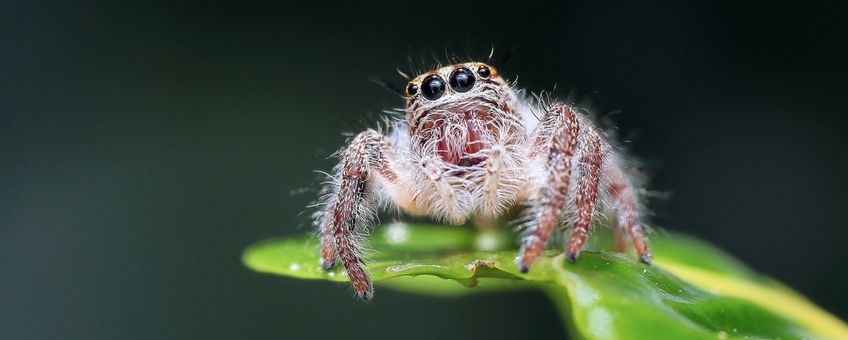
Habitat counts when predators lurk
Rice UniversityThat may be a plot point in many a bad B-movie, but its strategy has a basis in reality. Nick Keiser, a Rice Academy postdoctoral fellow in the Department of BioSciences at Rice University, demonstrated as much in a study of predator-prey combinations that tested the effect of habitat structure on how prey species’ behavioral traits predict their survival in the face of predation.
Keiser and his colleagues studied three small predators and their smaller prey to see if the predators’ success differed if the habitat was open, like the beach, or complex, like the forest. They discovered that while the percentage of prey devoured remained the same in either habitat, individual prey still had options, depending on the environment. “If you’re in an open habitat, running might be really important, depending on whom you’re running from,” Keiser said. “Whereas if you’re in a more complex environment, other things can be more important, like your ability to find refuge or your escape ability, things like that.”
Building arenas
 Keiser, who began the collaborative study while earning his Ph.D. at the University of Pittsburgh, tested sea stars that hunt snails, wolf spiders that hunt crickets and jumping spiders that also feed on crickets. Sea stars forage by sensing chemical cues, while both spider predators are sensitive to movement and vibrations. The researchers built 'arenas' of simple or complex habitats to see how six sea stars, seven wolf spiders and four jumping spiders acted and their more numerous prey reacted in each environment.
Keiser, who began the collaborative study while earning his Ph.D. at the University of Pittsburgh, tested sea stars that hunt snails, wolf spiders that hunt crickets and jumping spiders that also feed on crickets. Sea stars forage by sensing chemical cues, while both spider predators are sensitive to movement and vibrations. The researchers built 'arenas' of simple or complex habitats to see how six sea stars, seven wolf spiders and four jumping spiders acted and their more numerous prey reacted in each environment.
The results showed that predators stuck to their preferences in open environments. In repeated 14-day tests involving one hungry sea star and 15 snails marked for their predetermined activity level, the stars were seen to preferentially attack sedentary snails. Similarly, a single hungry wolf spider confined in the open with 15 marked crickets preferred the faster ones. Single jumping spiders were confined with 20 marked crickets and dined with a similar though less dramatic preference.
The experiments were run again with the same predators and the same numbers of new prey in complex habitats. In the weeds, so to speak, the predators didn’t distinguish between the fast and the slow, though they ate just as many. Averages showed individual prey had a roughly 40 percent likelihood of being consumed in either environment, but predators leaned toward their preferences in the open. “If snails were in the open environment, being faster was better, because they were being chased by a very slow predator,” Keiser said. “But in complex habitats, it didn’t matter,” he said. “Whether they were eaten became more of a chance encounter. There’s still the same amount of predation across habitat. It’s just which prey get eaten changes.”
In all three predator-prey systems, habitat complexity dampened selection and equalized the predation risk among active and sedentary prey, the researchers determined. Keiser and his colleagues were looking for patterns. “Part of ecology is to make generalizations about these types of patterns, predator-prey interactions and how they influence abundances and distributions of animals. We do this by bringing animals into the laboratory and experiment to extrapolate the results out into what we see in nature.
The real world
“But what we do in a simplified box in the lab might not always explain the patterns we see out in the real world, where there are differences in habitat complexity, which is what we manipulated,” he said. “Basically, we showed there can be differences in patterns across habitats, with nuances that depend on the system you’re researching and how those predators forage.”
A takeaway for humans, the researchers noted, is that rapid environmental change induced by humans can quickly change the complexity of habitats like coral reefs, mangroves or tropical forests and leave species that depend on them at risk. “Habitat degradation and loss are some of the leading threats to biodiversity,” Keiser said. “These data suggest that reducing habitat complexity, often associated with human developments, could alter all sorts of ecological interactions and the selection pressures that predators exert on prey populations.”
The research is published in the scientific journal Ethology.
Text: Rice University
Photos: Pixabay
